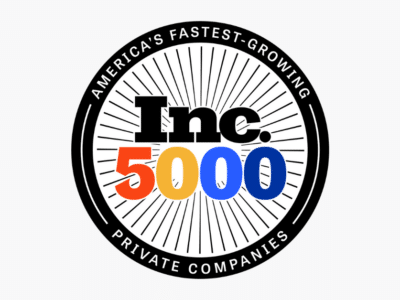3-minute read time
The rapid adoption of information technology (IT) across all industries is one of the most defining characteristics of our time. Stakeholders expect businesses to embrace digital transformation to remain competitive.
This transformation becomes possible when small business C-Suite leaders understand how to effectively leverage technology to achieve their business goals.
Modern Businesses Need a Modern Approach to IT
The role IT plays in businesses of all sizes has evolved dramatically in recent years. Only a short time ago, C-Suite leaders saw technology as little more than the engine that kept their business operations running. Everyone was happy as long as the engine was turning and employees had access to all systems and data.
Some tenured C-Suite leaders still approach technology this way. Still, their outdated approach of keeping the lights on doesn’t reflect that technology has become a key enabler of business growth. Instead of being the engine of business, technology is now the electronic control unit (ECU). This central brain controls and optimizes all business operations.
Just like ECUs in modern vehicles work together seamlessly to improve performance, reliability, and the overall experience, contemporary approaches to IT must be deeply integrated and optimized to achieve business goals. For that to happen, the entire C-suite from the CEO on down, must understand how technology creates business value and work together to take advantage of its transformative potential.
Examples of Effectively Leveraged Technology
Now that we’ve discussed why C-Suite leaders need to implement technology to achieve a competitive advantage let’s look at five specific examples of how the right IT solutions can boost efficiency and productivity.
1. Accessing IT Resources on Demand
For a long time, CIOs and CTOs were restrained by costly and inflexible on-premises infrastructure, unable to quickly and painlessly scale resources up or down based on changing business needs. With cloud computing and solutions like Amazon Web Services (AWS), Microsoft Azure, or Google Cloud Platform (GCP), the same CIOs and CTOs can access IT resources on demand and pay only for what they need.
2. Automating Repetitive and Time-Consuming Tasks
Approximately one-third of workday activities could be automated. This trend will likely continue as the technologies that make their automation possible become more advanced. CFOs, for example, can implement robotic process automation (RPA) to transform accounting and finance processes by eliminating repetitive and time-consuming tasks such as data entry or report generation. Automating tasks frees employees to focus on other activities, reducing errors.
3. Improving Collaboration Among Employees
According to data from Frost & Sullivan, collaboration significantly impacts a business’s overall performance, with sales, customer satisfaction, and product quality among the most impacted key performance indicators.
Effective C-Suite leaders understand this and look for ways to leverage technology to improve employee collaboration. For example, they might implement project management software like Asana or make it easy for everyone to communicate by text, voice, and video on platforms like Microsoft Teams.
4. Collecting and Analyzing Data in Real-Time
To effectively manage day-to-day operations, COOs and other C-Suite leaders need access to accurate and up-to-date insights into business performance and trends. Modern Business Intelligence (BI) and analytics tools make it easy to analyze large quantities of data and identify growth opportunities. A great example of an accessible BI and analytics tool that even small and medium-sized businesses can use to create a data-driven culture is Microsoft Power BI, and many other options are available.
5. Providing Personalized Customer Service
Inadequate customer service is among the top reasons why businesses lose customers. To improve it, digitally savvy CMOs use Customer Relationship Management (CRM) systems to personalize customer interactions so that every customer feels like a VIP. They use the data recorded in a CRM system to reveal valuable information about existing customers, predict their behavior, and better attract new ones.
Practical Technology Investments Pay Off
When small business leaders work together to drive their businesses forward by making effective technology investments, the benefits they unlock make the assets worth every single cent and every ounce of effort, including:
- Reduced costs
- Increased revenue
- Greater productivity
- Streamlined operations
- Improved customer experiences
- And more
C-Suite executives who aren’t among the 63 percent of leaders who believe that accelerating technology and digital innovation is the most impactful step risk becoming obsolete and irrelevant.
Related content: C-suite planning for an unpredictable market.




